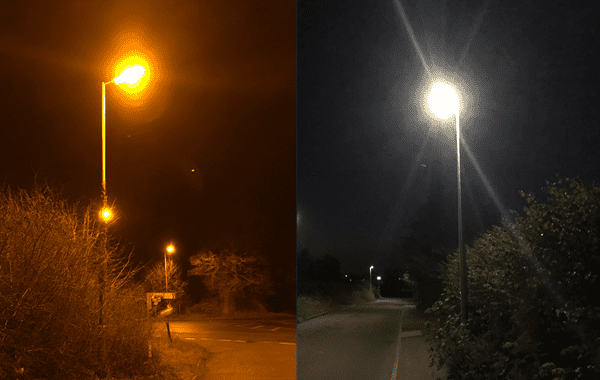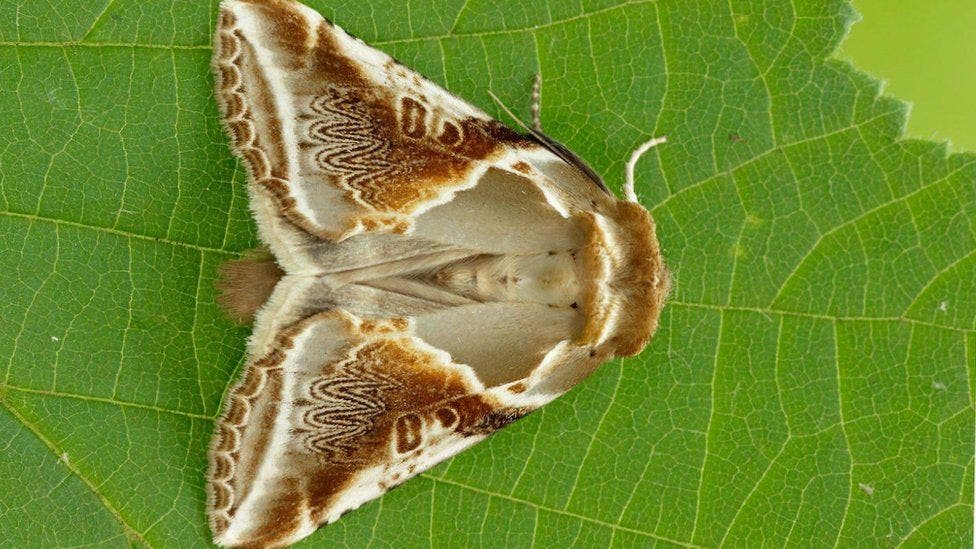
Insects account for nearly 80% of all animal life on Earth, but both their numbers and diversity have been declining dramatically in recent years. The factors responsible for plummeting insect numbers are manifold, including deforestation, climate change, and agriculture. A new study suggests that light pollution is also contributing heavily to this worrying decline, with LED streetlights having the most impact.
Blinded by the lights
For their new study, researchers affiliated with the charity Butterfly Conservation, Newcastle University, and the UK Centre for Ecology & Hydrology surveyed 26 sites with streetlights across the United Kingdom for caterpillars and compared their numbers with similar stretches of unlit road nearby.
This analysis showed that moth caterpillar numbers declined in lit hedgerows and grass margins by 47% and 33%, respectively, compared to unlit areas. Although moths are not the only insects that are affected by light pollution, their caterpillars don’t disperse far from their hatching sites, which makes them reliable estimates for how lighting affects local populations.

The results published in the journal Science Advances suggest that sites with white LEDs had the steepest reduction in the number of caterpillars compared to sites lit by sodium lamps. LED lights are much more efficient, last longer, and are cheaper in the long run than sodium lamps. However, the drawback is that while sodium lamps emit a yellow glow, LEDs emit light across the entire visible spectrum. This means there’s a much greater potential for wildlife disruption. For instance, insects are known to be very sensitive to shorter, bluer wavelengths of light, which are mostly absent from sodium lamps.
According to Douglas Boyes, a Ph.D. researcher in biology at Newcastle University, light pollution most likely prevents females from laying their eggs properly, a behavior that has evolved to occur in darkness. Furthermore, adult moths are naturally attracted to streetlights, where they become easy pickings for predators such as bats.
Boyes adds that moth numbers in Britain have declined by nearly one-third since the 1970s, and the same is probably true in other parts of Europe where monitoring isn’t as accurate.

More than 40% of insect species are declining and a third are endangered, a 2019 review found. The rate of extinction is eight times faster than that of mammals, birds, and reptiles, and the total mass of insects is falling by a precipitous 2.5% a year at a global level.
Insect loss can have a huge trickling effect on biodiversity at large, as many birds, reptiles, amphibians, and fish depend on insects as a food source.
Switching lights may help but there are still many unknowns
The main cause of the decline is believed to be agricultural intensification, particularly land-use change and the treatment of fields with synthetic fertilizers and pesticides. While it’s unclear just how much effect light pollution has on this decline relative to other factors, these most recent findings suggest that lighting nevertheless has a sizable impact.
This is particularly important as many cities across the world are transitioning towards all LED lighting. The solution is to use other types of lights. For instance, rather than white LEDs, municipalities can opt for warm white LEDs, which contain less blue light, or even red LED streetlights. Dimming the lights during the early hours may also help ease the impact on insect wildlife.


